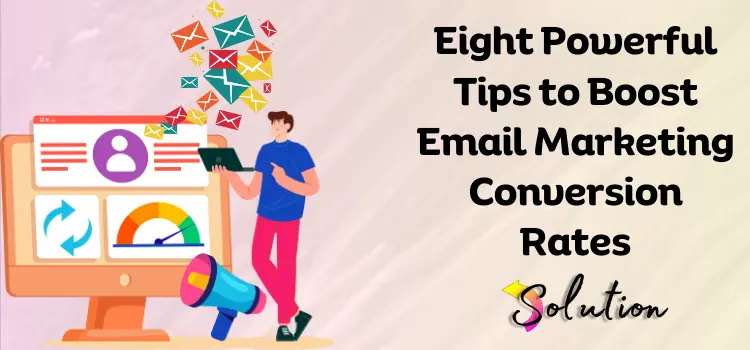
Email marketing is a cost-effective and simple way for businesses to stay in touch with customers and inform them about new services. By sending welcome emails, businesses can reach customers at various stages of their journey, making them feel at ease and providing valuable information about the services offered.
Stay connected with your customers by sending them regular newsletters, automated transaction updates, and follow-up messages after they make a purchase. These interactions help to establish trust and loyalty with your brand. Email marketing is a crucial tool for business growth, helping to drive sales, engage customers, and build brand trust.
While the benefits of email marketing are endless, many business owners struggle to achieve their objectives in this area. It takes time and effort to fully grasp the process and come up with creative strategies to keep your email campaigns fresh and engaging. Let us handle the complexities of email marketing for you, so you can focus on other aspects of your business. Check out our curated list of top email marketing tips and strategies to boost your conversion rates.
How to Increase Email Marketing Conversion Rate?
Increasing the conversion rates of your email marketing might have a significant impact on the financial performance of your company. Below, we’ll look at tried-and-true methods for increasing the efficacy of your email marketing conversion rates. From creating intriguing subject lines to refining your call-to-action, we’ll go over critical tactics for engaging your audience and driving more conversions. So, don’t waste time and read down to understand how to revolutionize your email marketing efforts.
1. Create targeted emails:
The easiest way to increase conversions for your organization is to produce more focused emails. You need to realize that individuals will join your email subscriber list for a variety of reasons. You do not need to send wide emails that cover everything your company sells or the services it provides. Essentially, these emails are overly generic and do not generate interest in your company.
To ensure precise results from your email marketing, you must adapt your emails to each member of your audience. For example, you may need to divide your audience into several groups based on common interests. One strategy for engaging your audience is to style your email with user-friendly information. They are more likely to open your emails and read the content since it is relevant to their interests.
2. Short and engaging subject line:
The next step is to create an appealing, useful, and personalized subject line for your email. Because your email subject line is the first thing potential users see in their inbox, it has a significant influence on average open rates. Take your time and craft a subject line that will leave a lasting impression on your email recipients while still getting to the point quickly, especially on mobile devices where the system can shorten long email subjects.
Personalized emails will help to humanize your email marketing efforts and foster connections. Professionals give a personal touch to their emails by using customization strategies in the subject line, such as the customer’s name, to make a better first impression.
3. Engage the audience with testimonials:
Another human propensity that company owners must exploit is the need to see results. Customers are more inclined to purchase after seeing testimonials from previous customers. Including testimonials in your emails will significantly enhance your email marketing conversion rates.
However, you should avoid flooding your customers’ emails with testimonials. Only one or two testimonials are required to captivate your readers. Another thing to keep in mind is that the testimonials you offer should be highly relevant to the customers. It should be relevant to the readers’ interests, namely the items they have looked for.
4. Optimize your email body:
Once you’ve successfully completed passes to entice your audience with your subject line, they’ll open your email. The next step is to analyze your email’s content and body. Make sure your emails are brief and simple to comprehend, and that they educate the readers about your new services or anything else that will keep them updated about your business. When doing so, you must consider varied screen sizes.
When generating content for the email body, be sure to consider a few key factors that will make your email more engaging and attractive. For example, utilize larger fonts that are far more readable, and keep in mind that most users must interact organically and readily with items in the shape of an F on the screen. Also, keep the text succinct for tiny screens. Smartly organizing your message will persuade your subscribers to click on the emails.
5. Structured emails for mobile:
According to the fidings, many people check their emails on mobile phones or tablets. That is why it is critical that you optimize your emails in such a manner that they deliver information to these mobile consumers while also providing a positive experience. Make it simple for your readers to read your emails. It is critical that you build a responsive design for your emails so that the intended audience can read them effortlessly.
According to the preceding estimate, generating mobile-friendly emails increases the number of leads who will read your emails and be more likely to convert.
6. Use a call to action (CTA):
One of the most common mistakes made by firms is failing to include a call to action (CTA) when structuring their emails. When a subscriber opens an email, they usually see what they expect to see, but they may not know what to do next. A CTA encourages them to take the next step. You can effortlessly steer them along the conversion route by using a CTA.
When structuring an email, you may construct a CTA based on your preferences, such as encouraging your audience to purchase or verify something they might download. You may shape this according to your preferences and direct them to the next logical step in the process. This will help increase email conversion rates.
7. Use abandoned cart emails:
Abandoned cart emails are one of the email types that regularly produce the greatest overall revenue. To put it simply, you can use your cart abandonment emails on a variety of devices to increase the likelihood of your consumers returning to your online business and making a purchase. Using the CTA in the shopping cart allows you to engage your audience and direct them to the next step.
Technology that allows things to remain in a basket even when a user switches devices is critical to the success of this strategy. If a consumer receives an email and clicks on the CTA only to find that their basket is empty, they are unlikely to fill it up again. Essentially, the goal of these emails is to entice consumers to buy, so make sure the procedure is as simple as possible.
8. Test your emails:
Before sending an email to your readers, make sure you test it thoroughly. Essentially, you send an email to your subscribers to push them to take a certain action. Instead of spending time sending several emails, test them beforehand to see how they work. The best strategy is to develop two versions of your emails that you believe will be effective for your target audience.
Furthermore, you may use A/B testing to determine which version performs better. These ideas might help you arrange your email marketing strategy and generate better emails. Before sending your emails to your subscribers, you must test them to see what performs best for your audience. This can help you offer better content to your audience and increase conversion rates.
End of note!
Implementing the tactics described above to increase email marketing conversion rates will provide your marketing and sales teams with the best opportunity to send the appropriate messages to the right individuals at the right times. Using a strong color font and a concise call to action encourages individuals to get more engaged with your company. Because conversion rates can vary so widely, it is best not to rely on averages and standards too much. Instead, establish a baseline conversion rate and work to enhance it through data-driven research.


